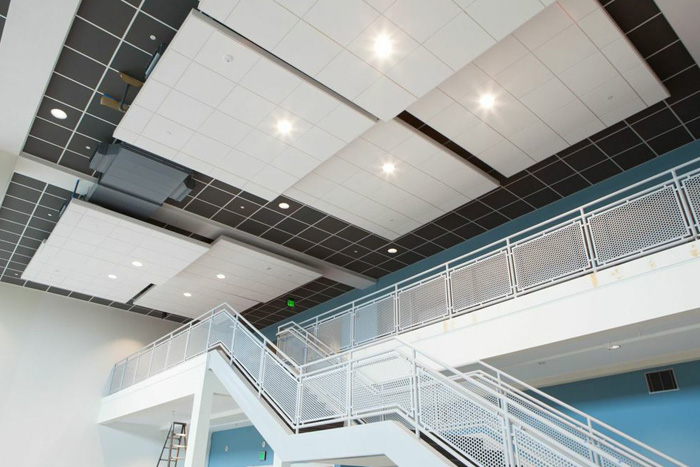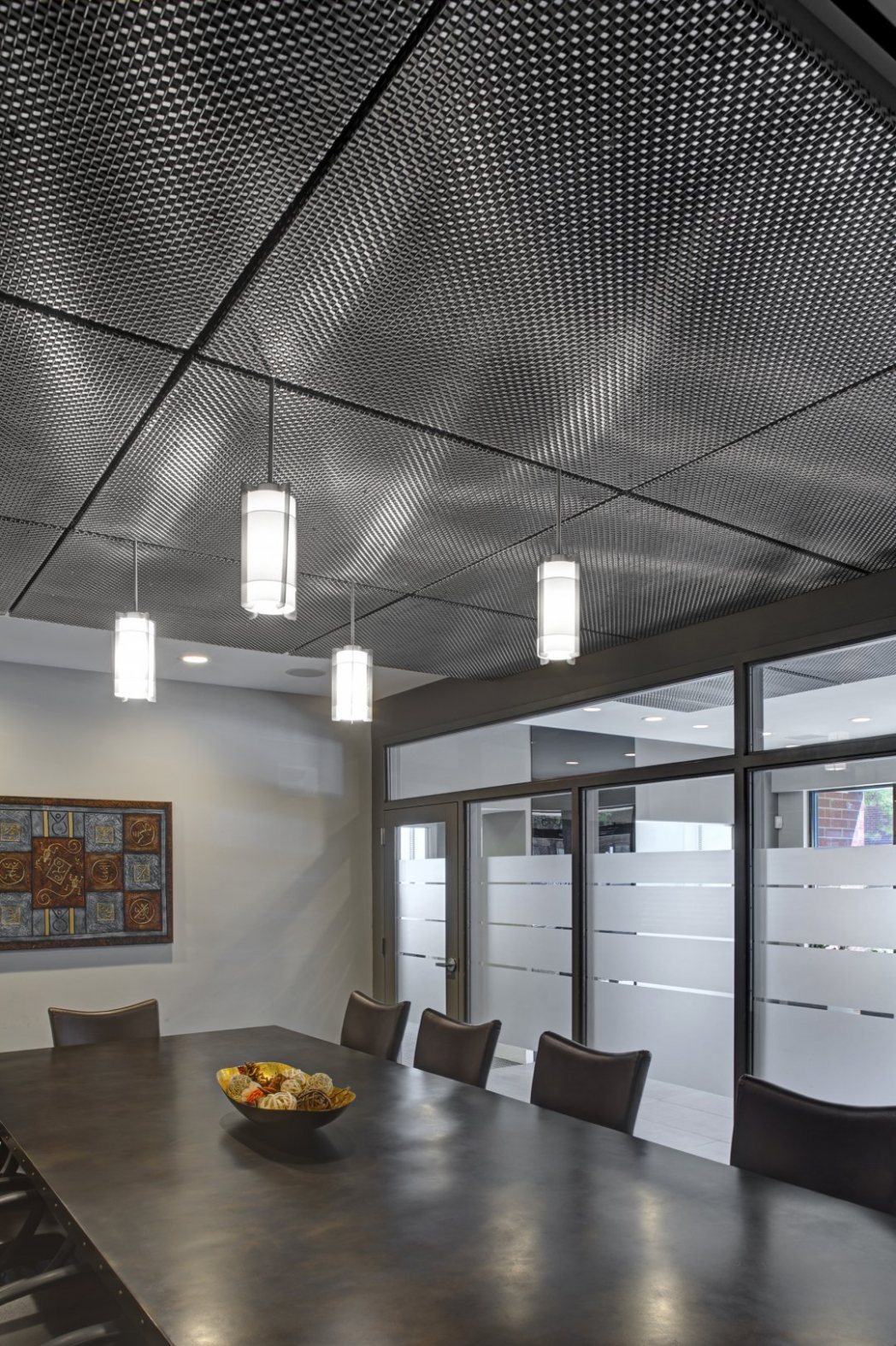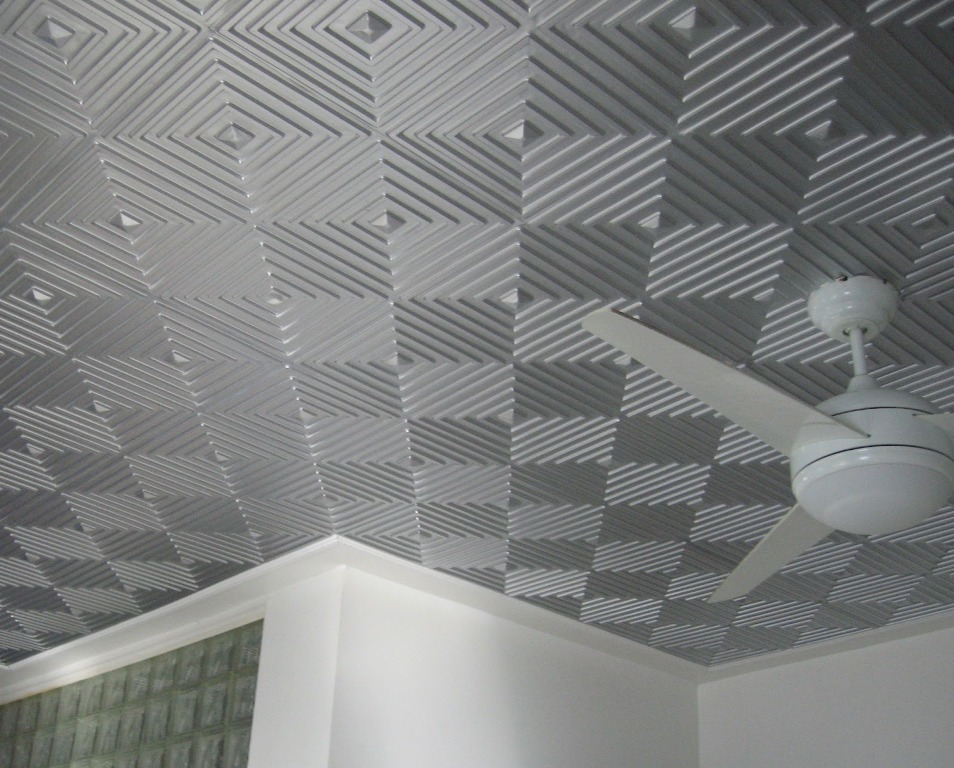ACOUSTICAL CEILING
One type of suspended ceiling is made up of Acoustic Ceiling Tiles (ACT) and a stick-built grid system. Sometimes called a lay-in ceiling, this type of system is versatile, durable, and cost effective. In addition, the ceiling tiles can be removed without damage to the system so that above ceiling items can be maintained. Seen throughout many commercial and institutional buildings, ACT is a popular ceiling material that now has a wide variety of aesthetic options.
SUSPENDED FUNCTION
Suspended ceiling tiles create a pocket of air between the upper surface of the room and the tiles themselves. This serves to capture and absorb sound as it travels around the round and ultimately to the ceiling.
The diagram identifies the major components of a suspended lay-in ceiling. The continuous main beam T shapes are suspended from the structure above by hanger wires. Shorter cross T segments connect to the main beam T shapes to make a rigid frame. Edge molding shapes are attached to the walls around the perimeter of the room. Finally, ceiling tiles are dropped into the grid to finish the ceiling. The end result is both functional and beautiful, perfect for workspaces, theaters and other residential and commercial applications.
TRANQUIL BEAUTY
The stigma of dropped ceilings is no more. With modern materials, colors, finishes and professional installation, your acoustical ceiling can be both functional and beautiful.
In the Fibre
Ceiling tiles come in an infinite variety of textures and designs. Most ceiling tiles are made from mineral fiber, but other materials are available, such as fiberglass. Mineral fiber tiles typically have a high Noise Reduction Coefficient (NRC), which means they are good at absorbing sound within a space to prevent echo or loud environments.
When evaluating acoustical ceiling tiles or panels, you’ll want to look at two general ratings: Noise Reduction Coefficient (NRC) and Ceiling Attenuation Class (CAC). NRC tells you how much sound a ceiling panel will absorb to lessen noise within a room. CAC rates a ceiling’s efficiency to block sound to adjacent rooms.
Worried about losing ceiling height? Today’s acoustical ceilings need only as little as 3” – 6″ of clearance, leaving plenty of headroom.
Acoustical ceiling design and installation is an art-form. It can be the difference between your standard dropped ceiling, and an aesthetic masterpiece.
Creating custom shapes, multi-tiered drops, and working with designer tiles can be a complex experience. The team at Geba Interiors has implemented the most complex of the bunch, and we have the skills and expertise to do the job right. We also consult our clients on design to ensure your acoustical goals are met and that we explore a variety of products and installation methods as to create a beautiful design as well.



